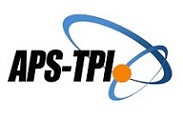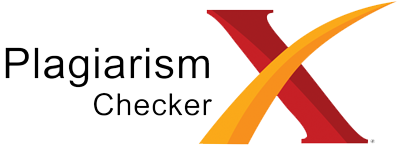Efektivitas Bahan Ajar Audio Visual MYOB dalam Pembelajaran Praktika Komputer Akuntansi
Abstract
Abstrak: Penelitian ini bertujuan untuk menguji coba secara terbatas efektivitas bahan ajar audio visual MYOB dalam pembelajaran Praktika Komputer Akuntansi yang dikembangkan dalam penelitian Tahap I. Target luaran berupa hasil ujicoba lapangan skala kecil dan revisi produk bahan ajar audio visual MYOB, yang dibutuhkan untuk persiapan produk akhir pada penelitian Tahap III. Penelitian menggunakan metode eksperimen dengan disain penelitian One-Shot Case Study dan Intact-Group Comparison. Berdasarkan hasil penelitian dapat disimpulkan bahwa bahan ajar audio visual MYOB efektif digunakan dalam pembelajaran Praktika Komputer Akuntansi dengan tercapainya KKM minimal atau sama dengan 75, walaupun tidak terdapat perbedaan ketuntasan belajar MYOB antara kelompok mahasiswa yang mengikuti pembelajaran Praktik Komputer Akuntansi yang menggunakan Bahan Ajar Audio Visual dan Bahan Ajar Modul cetak.
Abstract:This research is aimed to limitedly examine the effectiveness of MYOB audio visual teaching material in Computerized Accounting Practicum which is developed in Phase I. The outcome target is the small-scale try out results and the revision of MYOB audio visual teaching material which are required for the research in Phase III. This research used experimental methodology with One-Shot Case Study and Intact-Group Comparison research designs. Based on the research result, it can be concluded that MYOB audio visual teaching material is effective in Computerized Accounting Practicum learning with the level of Minimum Mastery Criteria reaches greater than or equal to 75. However, there is no difference in MYOB learning mastery between the group of students who have Computerized Accounting learning with audio visual teaching material and the ones who have printed modul material.
Keywords
Full Text:
PDFReferences
Agustin, W. (2019). Pedoman Pengembangan Modul Pembelajaran SMK. Jakarta: Direktorat Pembinaan Sekolah Menengah Kejuruan, Dirjen Dikmen, Kementerian Pendidikan dan Kebudayaan.
Alamsyah, R., Toenlioe, A. J., & Husna, A. (2018). Pengembangan Video Pembelajaran Kepenyiaran Materi Produksi Program Televisi Untuk Mahasiswa Teknologi Pendidikan Universitas Negeri Malang. Jurnal Kajian Teknologi Pendidikan, 1(3), 229–236. Retrieved from http://journal2.um.ac.id/index.php/jktp/article/view/4563
Ardiansah, F. (2018). Pengaruh Penggunaan Media Video Terhadap Minat dan Hasil Belajar Siswa Kelas XI pada Pelajaran PAI di SMA YPI Tunas Bangsa Palembang. Jurnal Kajian Teknologi Pendidikan, 5(1), 56–70. https://doi.org/http://dx.doi.org/10.17977/um038v2i12019p001
Bustanil, M., Asrowi, & Ardianto, D. T. (2019). Pengembangan Media Pembelajaran Interaktif Berbasis Video Tutorial Di Sekolah Menengah Kejuruan. JTP - Jurnal Teknologi Pendidikan, 21(2), 119–134. https://doi.org/10.21009/JTP.V21I2.11568
Colasante, M., & Douglas, K. (2016). Prepare-participate-connect: Active learning with video annotation. Australasian Journal of Educational Technology, 32(4), 68–91. https://doi.org/10.14742/ajet.2123
Cooper, D., & Higgins, S. (2015). The effectiveness of online instructional videos in the acquisition and demonstration of cognitive, affective and psychomotor rehabilitation skills. British Journal of Educational Technology, 46(4), 768–779. https://doi.org/10.1111/bjet.12166
Davis, B., & Summers, M. (2015). Applying Dale’s Cone of Experience to increase learning and retention: A study of student learning in a foundational leadership course. In QScience Proceedings (Vol. 2015, p. 6). West Lafayette: Purdue University. https://doi.org/10.5339/qproc.2015.elc2014.6
DeWitt, D., Alias, N., Siraj, S., & Spector, J. M. (2017). Wikis for a collaborative problem-solving (CPS) module for secondary school science. Educational Technology and Society, 20(1), 144–155. Retrieved from https://www.jstor.org/stable/jeductechsoci.20.1.144
DeWitt, D., Siraj, S., & Alias, N. (2013). Collaborative mlearning: A module for learning secondary school science. Educational Technology and Society, 17(1), 89–101. Retrieved from https://www.jstor.org/stable/jeductechsoci.17.1.89
Fyfield, M., Henderson, M., Heinrich, E., & Redmond, P. (2019). Videos in higher education: Making the most of a good thing. Australasian Journal of Educational Technology. Australasian Society for Computers in Learning in Tertiary Education (ASCILITE). https://doi.org/10.14742/ajet.5930
Gall, M. D., Gall, J. P., & Borg, W. R. (2003). Educational Research: An Introduction. Pearson Education, Inc.2 (7th ed.). Boston: Perason Education, Inc.
Giannakos, M. N., Jaccheri, L., & Krogstie, J. (2016). Exploring the relationship between video lecture usage patterns and students’ attitudes. British Journal of Educational Technology, 47(6), 1259–1275. https://doi.org/10.1111/bjet.12313
Haking, D. D., & Soepriyanto, Y. (2019). Pengembangan Media Video Pembelajaran Renang pada Mata Pelajaran PJOK untuk Siswa Kelas V SD. Jurnal Kajian Teknologi Pendidikan, 2(4), 320–328. Retrieved from http://journal2.um.ac.id/index.php/jktp/article/view/10156
Hidayat, A. (2018). Pengembangan Bahan Ajar MYOB Berbasis Audio Visual. Jurnal Pendidikan Dan Pembelajaran Ekonomi Akuntansi, 4(2), 72–82. Retrieved from http://jurnal.fkip.unla.ac.id/index.php/jp2ea/article/view/306
Hidayat, A., & Ilyas. (2016). Penggunaan Perangkat Lunak NetSupport School untuk Pelaksanaan Pembelajaran Berbasis Komputer (Studi Kaus pada Perkuliahan Praktika Akuntansi II). Bandung.
Hidayat, A., & Mariam, P. (2017). Pengembangan Bahan Ajar Spreadsheet dengan Menggunakan NetSupport School. Bandung.
Manroe, M. (2018). Pengertian EFEKTIVITAS adalah: Kriteria, Aspek, dan Contoh Efektivitas. Retrieved July 31, 2019, from https://www.maxmanroe.com/vid/manajemen/pengertian-efektivitas.html
McFarlin, B. K., Weintraub, R. J., Breslin, W., Carpenter, K. C., & Strohacker, K. (2011). Designing Online Learning Modules in Kinesiology. Journal of Educational Technology & Society, 14(2), 278–284. Retrieved from http://www.ncbi.nlm.nih.gov/pubmed/25232276
Nashrullah, N., Sulton, S., & Soepriyanto, Y. (2019). Pengembangan Video Pembelajaran Adaptasi Dan Cara Berkembang Biak Makhluk Hidup Untuk Siswa Kelas Vi Sekolah Dasar. Jurnal Kajian Teknologi Pendidikan, 1(4), 327–332. Retrieved from http://journal2.um.ac.id/index.php/jktp/article/view/7076
Office of Distance Learning The Florida State University. (2011). Instructional Media: Chalkboards to Video. Retrieved April 12, 2019, from https://distance.fsu.edu/docs/instruction_at_fsu/Chptr9.pdf
Pressman, R. S. (2010). Software Engineering: A Practitioner’s Approcach. Software Quality Engineering: A Practitioner’s Approach (7th ed.). New York: McGraw-Hill.
Purwono, J., Yutmini, S., & Anitah, S. (2014). Penggunaan Media Audio-Visual pada Mata Pelajaran Ilmu Pengetahuan Alam di Sekolah Menengah Pertama Negeri 1 Pacitan. Jurnal Teknologi Pendidikan Dan Pembelajaran, 2(2), 127–144. Retrieved from https://jurnal.fkip.uns.ac.id/index.php/tp/article/view/3659
Salkind, N. J., & Rasmussen, K. (2007). Encyclopedia of Measurement and Statistics (Vol. 1). California: SAGE Reference Publication, Inc. https://doi.org/10.1111/j.1365-2982.2011.01731.x
Stöhr, C., Stathakarou, N., Mueller, F., Nifakos, S., & McGrath, C. (2019). Videos as learning objects in MOOCs: A study of specialist and non-specialist participants’ video activity in MOOCs. British Journal of Educational Technology, 50(1), 166–176. https://doi.org/10.1111/bjet.12623
Yeager, K. (2013). Independent Samples t Test - SPSS Tutorials - LibGuides at Kent State University. Retrieved April 12, 2017, from https://libguides.library.kent.edu/SPSS/IndependentTTest
DOI: http://dx.doi.org/10.17977/um038v3i12019p097
Refbacks
- There are currently no refbacks.
Copyright (c) 2020 Asep Hidayat

This work is licensed under a Creative Commons Attribution-ShareAlike 4.0 International License.
JKTP: Jurnal Kajian Teknologi Pendidikan published by Department of Educational Technology, Faculty of Education, State University of Malang in Collaboration with Asosiasi Program Studi Teknologi Pendidikan Indonesia (APS TPI).
Publisher Address:
Lab. Teknologi Pendidikan, Gd.E2, Lt.1
Fakultas Ilmu Pendidikan Universitas Negeri Malang
Jl. Semarang 5, Kota Malang Email: jktp.fip@um.ac.id
========================================================================================================
| INDEXED BY | TOOLS | PLAGIARISM CHECK | ARTICLE TEMPLATE |
|
|

JKTP: Jurnal Kajian Teknologi Pendidikan is licensed under a Creative Commons Attribution-ShareAlike 4.0 International License.
JKTP Statistics (Since July 13th, 2020)





.png)












